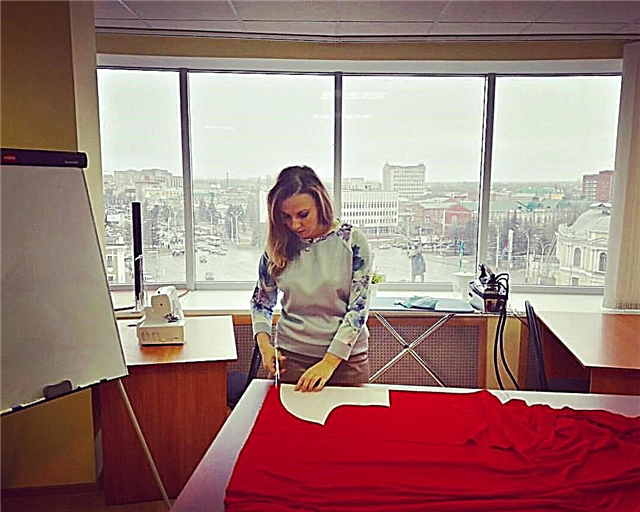With the help of these simple ornaments, you can decorate not only interior items, starting from curtains and ending with a tablecloth, but also clothes - even beginners can cope with these decorative stitches!

Even the simplest decorative seam, for example, embroidered on the hem of a dress, can become a real decoration and highlight of a thing. At the same time, the seamstresses do not require any special embroidery skills - they are all embroidered according to a certain pattern, which needs only to be carefully repeated.
Today we will get to know you better with three different seams, additionally decorated with beads.
Master class: how to make ready-made embroidery in a cosmetic bag
1. Open Cretan Seam with Beads
It is believed that the Cretan seam and its many varieties originated on the island of Crete, where they are used to decorate national costumes and other textile products.
First of all, with the help of a water-soluble marker, we mark the desired width of the seam. If you have a good eye, you can easily do without additional markings, and on fabrics with a uniform weave of threads, you can simply count the warp threads to comply with the length of the stitches.

We remove the needle in the middle, string one bead and make a loop, passing the working thread under the needle.

Then we remove the needle at the top point and repeat the same actions.

20 ideas for hand embroidery on a t-shirt that you will want to repeat
2. Seam semi-loop with an attachment and beads
In appearance, I really want to call this shovchik “herringbone”, but in fact this name bears a slightly different, albeit similar, seam. First of all, mark the width of the seam and the middle. It should be borne in mind that the width of the seam directly depends on the amount of beads used - if this does not sound completely clear, first check out the next step.

We draw a needle at the upper right point, string six (or more, if desired, but an even number) beads, and then we puncture the needle from the lower right point to the middle. At the same time, we divide the beads in half so that in the future the attachment goes exactly in the middle. We sew - a straight stitch exactly in the middle.

As you can see, the beads are lying tight, without gaps, as its number corresponds to the width of the seam. If the beads are smaller and the stitch is longer, the seam will look less aesthetically pleasing.

How to make and color ribbons for embroidery
3. A loop with an attachment decorated with beads and entanglement
In the previous version, we used a half-loop, in this we will try a full one!
We outline a straight line, draw the needle at the starting point and make a loop, introducing the needle at the point of the first puncture and leading to the desired stitch length.

Then we string one bead and make a small attachment.

We perform such single loops with the attachment at an equal distance from each other and go to the entanglement. In this case, the entanglement consists of two free threads fixed only at the beginning and at the end of the line. They go in waves, passing under the loops with an attachment.

It should be borne in mind that the looser the twisting threads, the greater the danger of a catch when using things decorated with this embroidery - since the thread is not fixed along the main length, you can easily catch it and even pull it out slightly. It can also be easily straightened and returned to its previous position, but nevertheless, if you embroider, for example, on clothes where the likelihood of a clutch may be high, it is worth additionally securing the entanglement threads using monofilament. Neat, invisible fasteners can be made in those places where the entanglement threads intersect under the loop with the attachment. So you will be sure that the embroidery will not be damaged, even in the case of a clue.

DMC Étoile Mouline thread: thread overview and embroidery workshop



